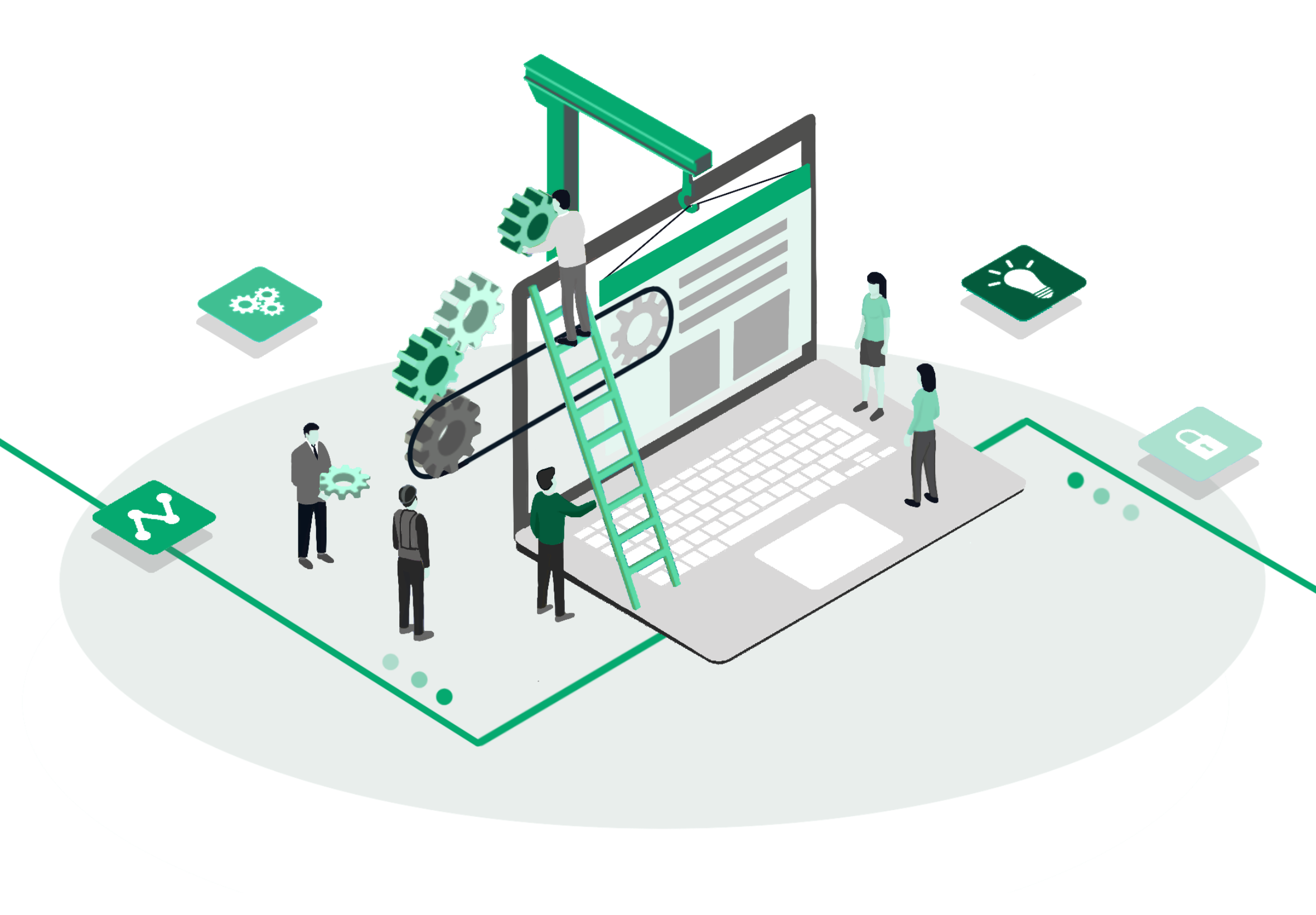
It’s 2023. Most of the low-hanging digital transformation fruit has been picked. We’ve got online shopping, digital media, and online scheduling systems…while we’d hesitate to call any digital transformation “easy,” the more straightforward projects have already been crossed off the list.
What we’re left with now are the harder-to-budge changes. We’ve got industries like finance, healthcare, and manufacturing that, in addition to being strapped by complex laws, are also highly human-dependent. Digital transformation isn’t a simple 1:1 switch, putting an e-widget where a physical one used to be. To pull off a genuine digital transformation in industries like these, you often need to change the whole system to some degree. And we don’t need to tell you that such a thing can be extremely challenging.
In our experience, coming up with the actual solutions our clients need is usually the relatively easy part. Very few needs are entirely unprecedented, and Grand Studio has been in the game long enough to spot patterns in what tends to work. But, as we know, simply dropping even the slickest of digital tools into an institution not yet ready to adopt it is an effort destined to fail. The hard part — what we spend a lot of time thinking about as a design consultancy — is how to get people to buy into digital transformation.
Here are a few buy-in barriers we’ve run into, and how to navigate (or, better yet, prevent) them.
Barrier 1: People feel a solution is being pushed onto them from above.
Any digital tool should always be framed as operating in service of people — not the other way around. Unfortunately, however, many people have been forced to work with tools that feel more like a chore than a service, and that suspicion can carry over to any new digital product. We like to address this explicitly when we do research, framing the job of the tool as directly supporting their work and existing routines. We ask lots of questions about their needs and habits and make sure that these are respected to the degree possible in the final design. If we’re working on revamping a system that is currently painful, it can also help to acknowledge the frustrations they’ve been dealing with. It builds faith you’re setting out to do it differently this time.
Barrier 2: People fear being replaced by digital tools.
This fear has been around since the very first digital tools surfaced, and as technology advances, it’s not going away anytime soon. Workers who have specific technical skills, either resulting from formal education or on-the-job experience, will be justifiably proud of their abilities and defensive about new technologies that could displace them. However, we’ve hardly run into situations when a digital transformation is designed for, or results in massive layoffs. Usually, the organization’s goal is to optimize, get more results out of the resources and employees they have, and allow humans to work at the top of their skill level. If this reflects your organization’s strategy, it may be wise to address this concern head-on, mediating any fear about how roles may change once the new process/product is implemented.
Situation 3: Highly technical audiences do not trust something digital to do parts of their job.
Related to the fear of being replaced is the suspicion that nothing digital will be a viable substitute for a person’s expertise. We see this in many types of industries, and it’s a difficult hurdle to overcome. We find that significantly involving these technical experts in the process is the most powerful way to confront this resistance.
Initially, you’ll want to do extensive research with them, understanding the ins and outs of their jobs and expertise. Next, budget some time for these experts to test the tool out before widespread release. In addition to likely making your product better, this allows some time for folks to develop trust that the tool can be relied upon. We’ve even seen some stakeholders gain excitement at this phase, seeing how delegating some of the simpler parts of their job can enable them to work faster and better — it’s often the case that the bits best suited to new technology are the bits users currently hate to do, and that makes for a powerful case for change. Your pool of collaborator experts will do the job of spreading the word to other experts, and when they do, they’ll encounter much less suspicion than an outsider would.
Situation 4: The prospect of change in any form feels overwhelming.
No matter how well planned, change is often hard. One way we like to work with organizations overwhelmed by change is to start small. Even if your digital transformation goals are mighty, beginning with one bite-sized, concrete thing people can use immediately will do two critical things: first, build trust that you can deliver on your project goals, and second, demonstrate to others how change can happen. Quick wins build the faith you need to get those larger projects rolling.
We love working with clients on the precipice of a digital transformation. Have a project you’d like to work together on? We’d love to hear from you.
